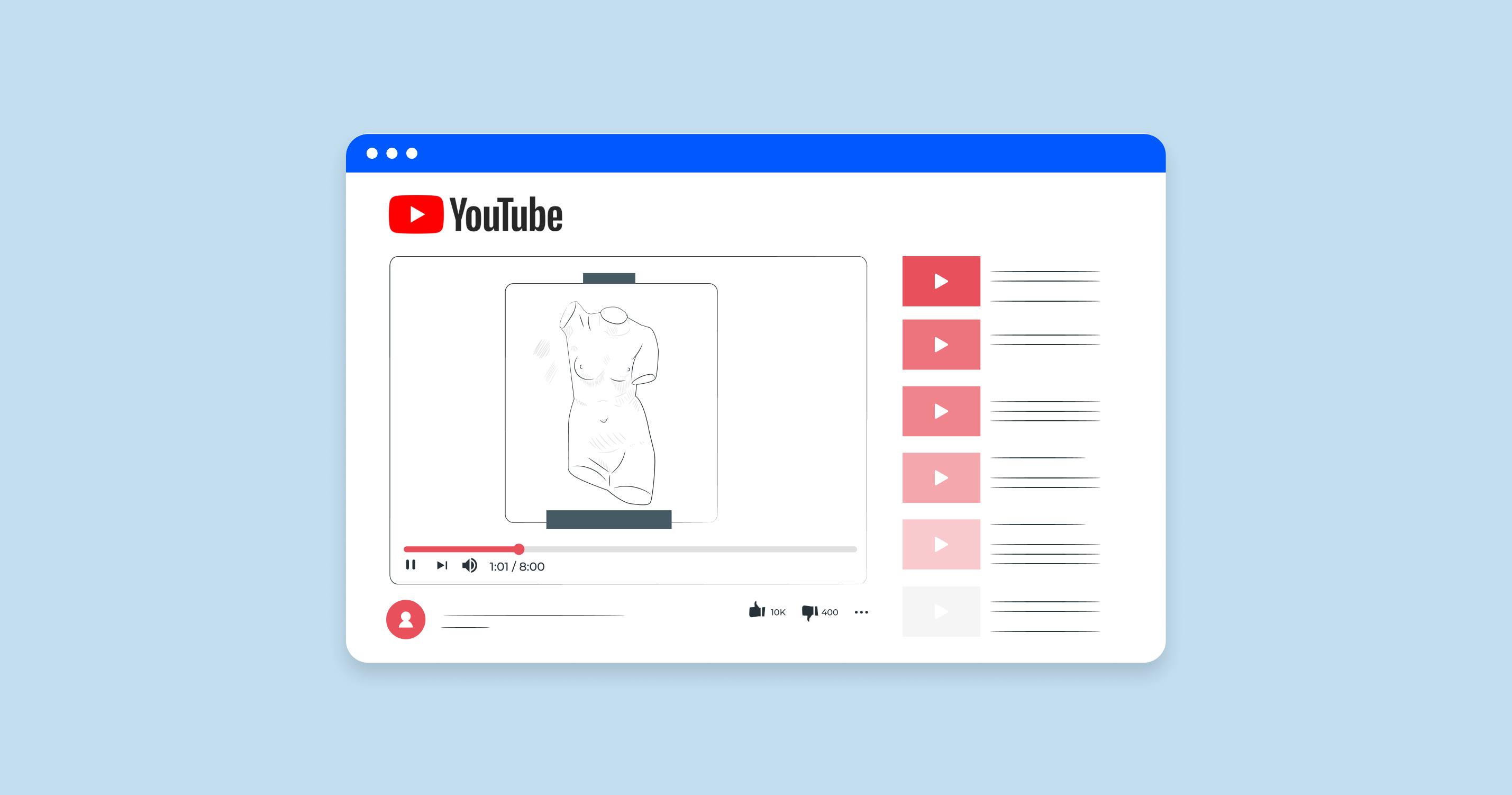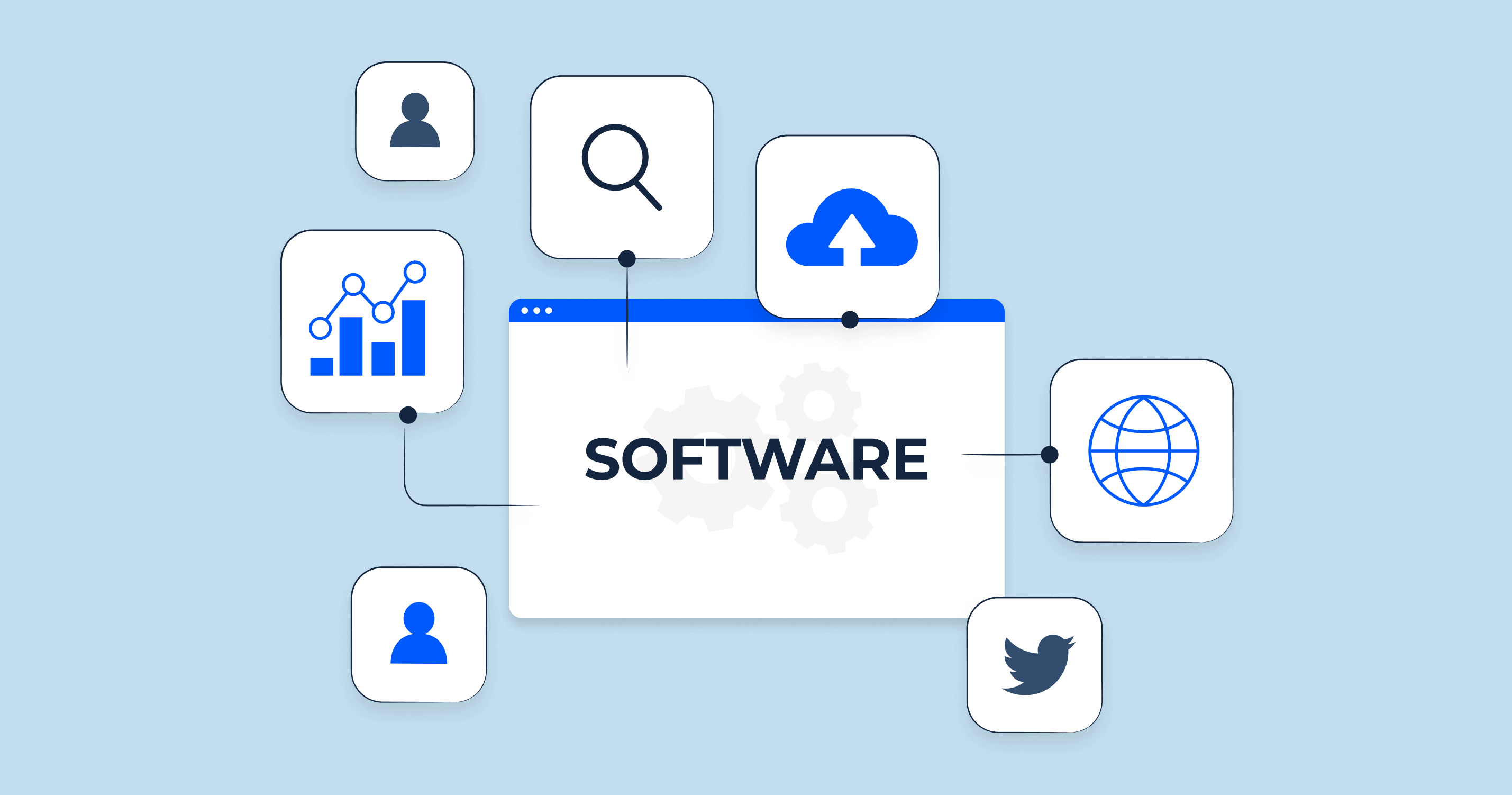What are Channel Keywords on YouTube?
YouTube, the world’s largest video-sharing platform, offers numerous features to its creators to optimize their content for better discoverability and reach. Among these features are “Channel Keywords.” But what exactly are they, and why are they important for content creators?
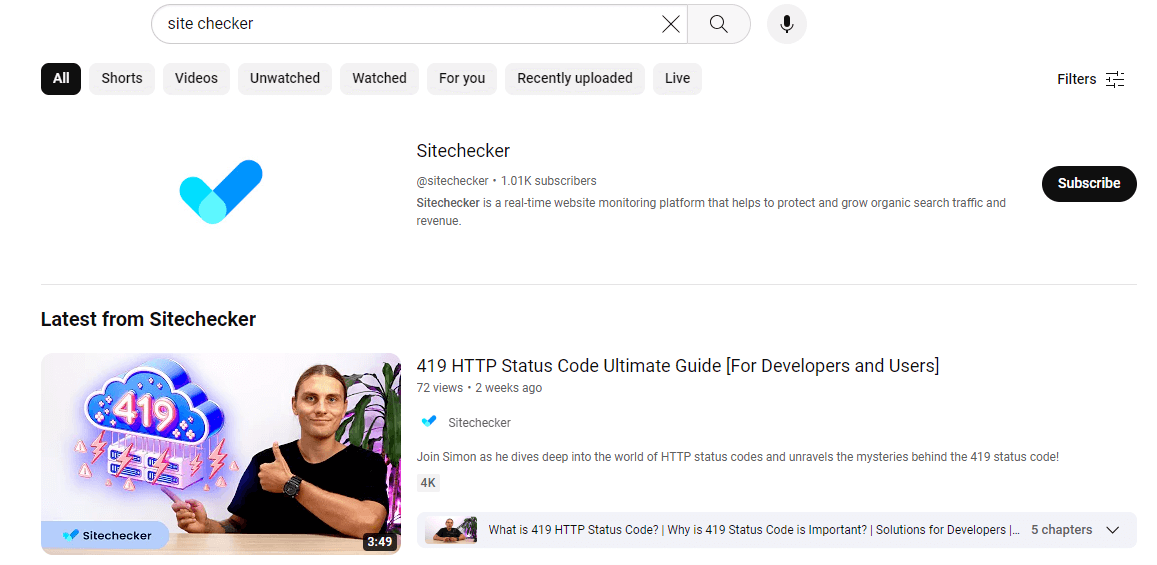
Channel Keywords Defined
Channel keywords are specific terms or phrases that you can add to your YouTube channel’s settings to give the platform a better idea about the nature of your content. Think of them as tags for your entire channel, rather than for individual videos. They are an integral part of YouTube’s SEO (Search Engine Optimization) efforts, helping to categorize and position your channel in its vast ecosystem.
For example, if you run a cooking channel, you might use keywords like “recipes,” “homemade dishes,” “dessert tutorials,” and so on. These keywords provide a broad overview of what viewers can expect when they visit your channel.
The Importance of Channel Keywords
- Improved Discoverability: YouTube’s algorithm uses channel keywords, among other factors, to determine the relevance of your channel when users search for content. Accurate keywords can help your channel appear in relevant search results, bringing in new viewers.
- Better Ad Targeting: If you monetize your YouTube channel, the platform uses channel keywords to serve relevant ads to viewers. This means more effective advertising, potentially leading to higher ad revenue.
- Channel Clarity: For viewers who stumble upon your channel, the keywords give an immediate sense of what kind of content you produce. This clarity can be the deciding factor for them to hit the “Subscribe” button.
Choosing the Right Channel Keywords
While it’s tempting to add as many keywords as you think fit, it’s crucial to be selective and focused. Choose keywords that genuinely represent your content and resonate with your target audience. Conducting keyword research, understanding your niche, and regularly updating your keywords based on content shifts can be very beneficial.
Channel keywords play a pivotal role in enhancing the visibility and clarity of your YouTube channel. They are like the backbone of your channel’s SEO efforts, guiding YouTube’s algorithm and potential subscribers to your content. As with all SEO practices, regular updates and research are essential to ensure that your channel remains relevant and easily discoverable.
What Keywords Should I Use for YouTube?
Choosing the right keywords for your YouTube channel and videos is crucial for increasing your content’s visibility and attracting the right audience. Here’s a guide on how to select the best keywords for your YouTube content:
Understanding Your Content and Audience
- Analyze Your Niche: Before diving into keyword selection, understand the niche you’re targeting. Are you creating fitness tutorials, tech reviews, or vlogs about daily life? Knowing your niche helps you narrow down keyword choices.
- Profile Your Audience: Consider who you’re targeting with your content. Are they beginners or experts? Teenagers or adults? Tailor your keywords to appeal to your ideal viewer.
Steps to Find the Right Keywords
-
Start With YouTube’s Search Suggest: Type a word related to your niche into YouTube’s search bar and observe the suggested phrases. This feature offers insights into popular search queries, giving you potential keyword ideas.
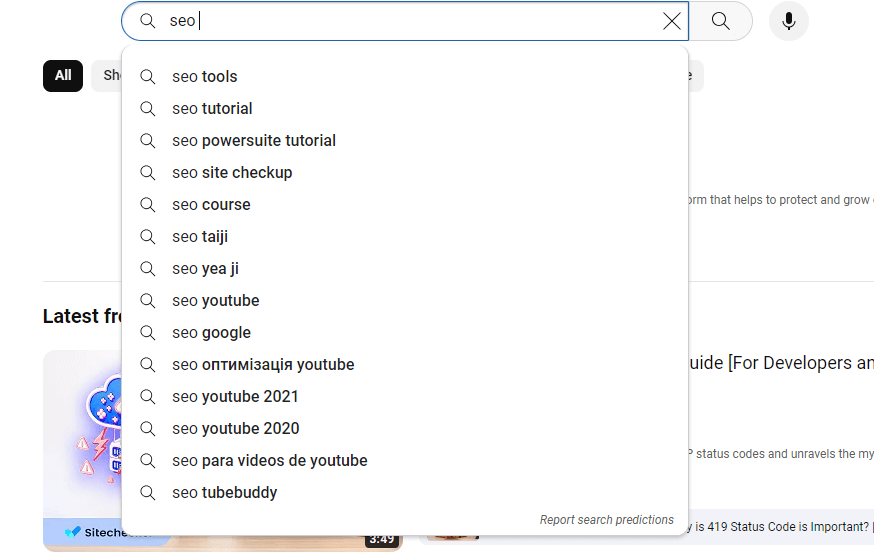
- Use Keyword Research Tools: Platforms like TubeBuddy, vidIQ, or Google’s Keyword Planner can help you identify trending keywords in your niche. These tools also provide data on keyword competition and search volume.
- Study Competitors: Examine popular channels in your niche. Notice the keywords they use in their video titles, descriptions, and tags. While you shouldn’t copy them verbatim, they can inspire your keyword strategy.
- Prioritize Long-Tail Keywords: These are longer phrases that are more specific than single-word keywords. For instance, instead of “yoga,” you might use “yoga for beginners at home.” Long-tail keywords can often be less competitive and more targeted.
- Consider Seasonality: Some keywords may trend during specific times of the year. For example, “Halloween makeup tutorial” might see a surge in October.
Tips for Using Keywords Effectively
- Be Relevant: Ensure that your keywords genuinely match the content you’re producing. Misleading keywords can lead to viewer drop-off and potential penalties from YouTube.
- Don’t Keyword Stuff: While it’s essential to use keywords, don’t overdo it. YouTube’s algorithm can detect and potentially penalize videos that appear spammy.
- Update Regularly: Your content might evolve over time, and so should your keywords. Revisit and update them periodically to match your current content.
The right keywords can significantly enhance the discoverability of your YouTube content. By understanding your niche, leveraging keyword tools, and employing best practices, you can ensure that your videos reach the audience they deserve. Remember, while keywords are a powerful tool, quality content is still the heart of YouTube success. Always strive to create valuable, engaging content for your viewers.
How Many Keywords Can You Use on YouTube?
Keyword optimization plays a crucial role in YouTube SEO. However, it’s not just about the quality and relevance of your keywords but also their quantity. Let’s delve into the specifics of how many keywords you can and should use on YouTube for both your channel and individual videos.
Channel Keywords:
- Limit: YouTube allows you to use up to 500 characters in the channel keywords section. This count includes spaces and punctuation.
-
Best Practices:
- Instead of using single words, focus on multi-word phrases or long-tail keywords that describe your channel’s content.
- Ensure that the most important keywords appear first.
- Avoid unnecessary repetition; it won’t offer any added benefit and might take up space that could be used for other relevant keywords.
Video Tags (Video-specific Keywords):
- Limit: For individual videos, YouTube provides a maximum of 500 characters for video tags.
-
Best Practices:
- Use a mix of broad (e.g., “recipe”) and specific (e.g., “vegan chocolate cake recipe”) tags to cover a range of potential search queries.
- Include variations of your primary keyword, synonyms, and related terms.
- Consider adding a few branded tags, which can be your channel name or a unique tagline.
Title and Description:
-
Limit: Video titles can be up to 100 characters, but it’s advisable to keep them around 60 characters so they display fully in search results. Descriptions can be up to 5,000 characters.

-
Best Practices:
- Incorporate your main keyword naturally into the title.
- Use the description to include related keywords, elaborate on the video content, and provide context. The first 1-2 lines are crucial as they appear in search results and should be keyword-rich.
Considerations and Tips:
- Avoid Keyword Stuffing: Using an excessive number of keywords, especially irrelevant ones, can be perceived as spammy by YouTube’s algorithm. It’s vital to strike a balance between optimizing for search and ensuring a natural, viewer-friendly experience.
- Relevance Over Quantity: While you have character limits, it’s more important to choose relevant and accurate keywords than to fill up every available character space.
- Analyze & Update: Utilize YouTube’s analytics to see which keywords are driving traffic to your videos. Update tags and descriptions based on performance data and emerging trends in your niche.
When it comes to keywords on YouTube, the goal is to provide clear, concise information to both the platform and potential viewers about your content’s subject. By understanding the limits and best practices associated with channel and video keywords, you can optimize your content for better discoverability without overwhelming or misleading your audience.
Where Do I Add Keywords to My YouTube Channel?
Step 1 – Go to the YouTube Studio
The YouTube Studio is the central hub for creators, providing a range of tools to manage videos, analyze performance, and fine-tune channel settings. To begin the process of adding or editing your channel keywords:
- Sign in to your YouTube account.
-
Click on your profile picture/icon located on the top right corner of the YouTube homepage.
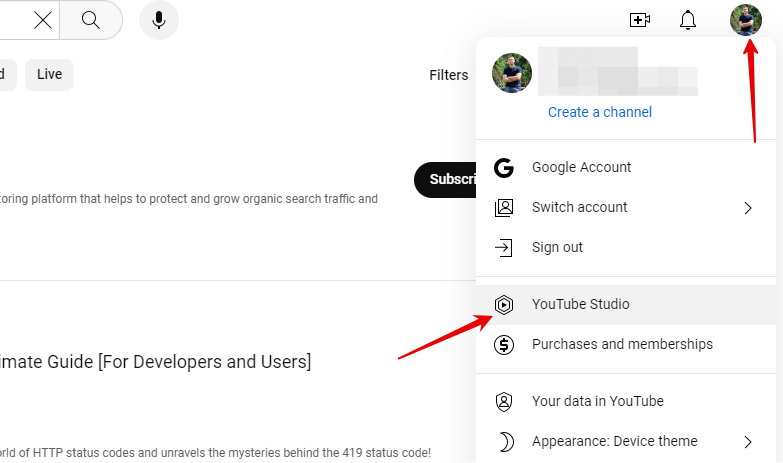
- From the dropdown menu, select “YouTube Studio.” This will direct you to the main dashboard of the YouTube Studio, where you can access various tools and settings.
Step 2 – Select the “Settings” Menu Item
Now that you’re in the YouTube Studio:
-
Navigate to the bottom left side of the dashboard. You’ll find a list of options.
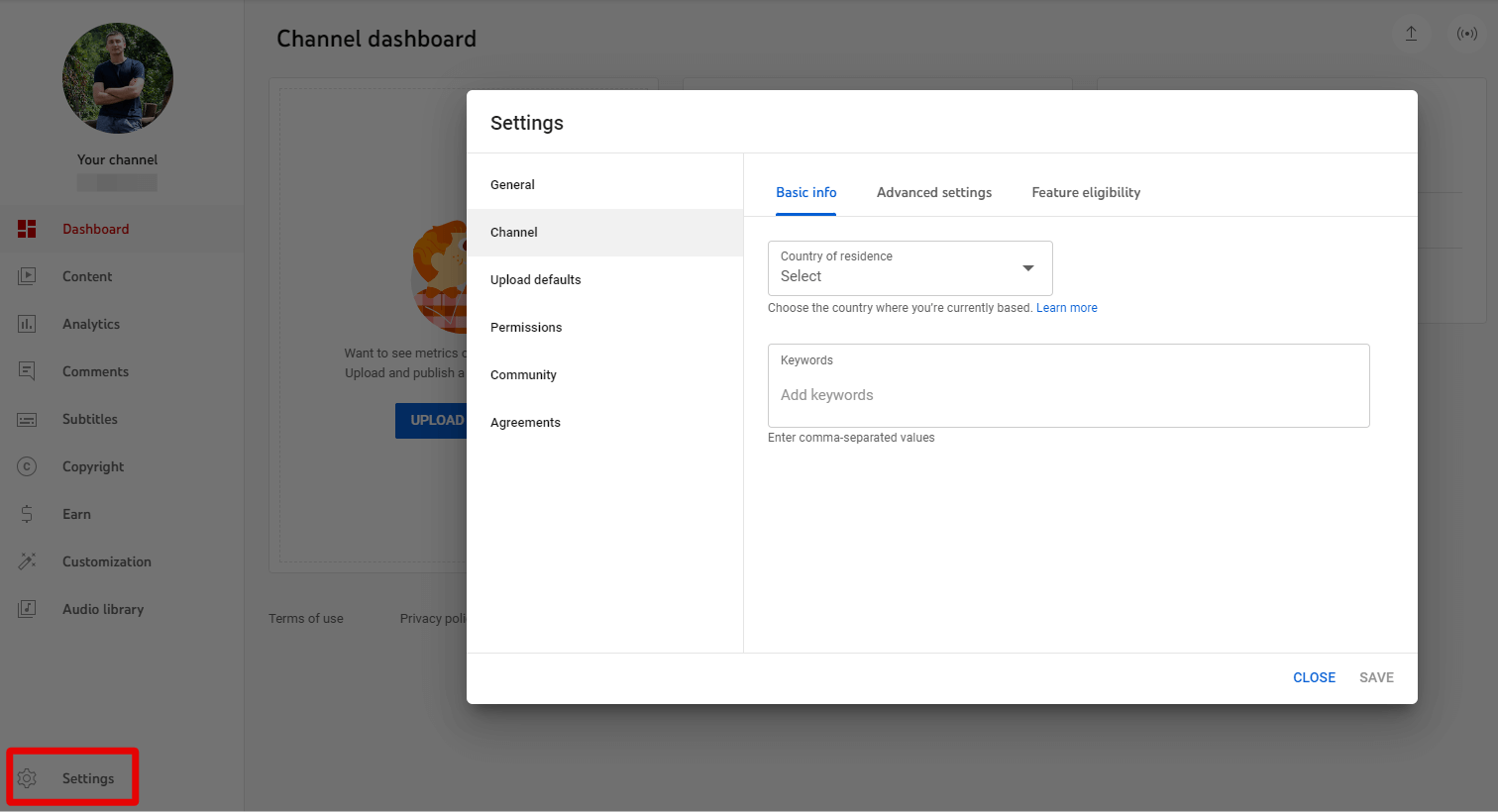
- Click on “Settings.” This will open a new window with several tabs that allow you to customize different aspects of your channel, such as General, Channel, Upload Defaults, Permissions, and Community.
Step 3 – Select the “Channel” Menu Item
Within the “Settings” window:
-
Click on the “Channel” tab. This tab specifically deals with settings related to your channel’s branding, basic info, and advanced settings.
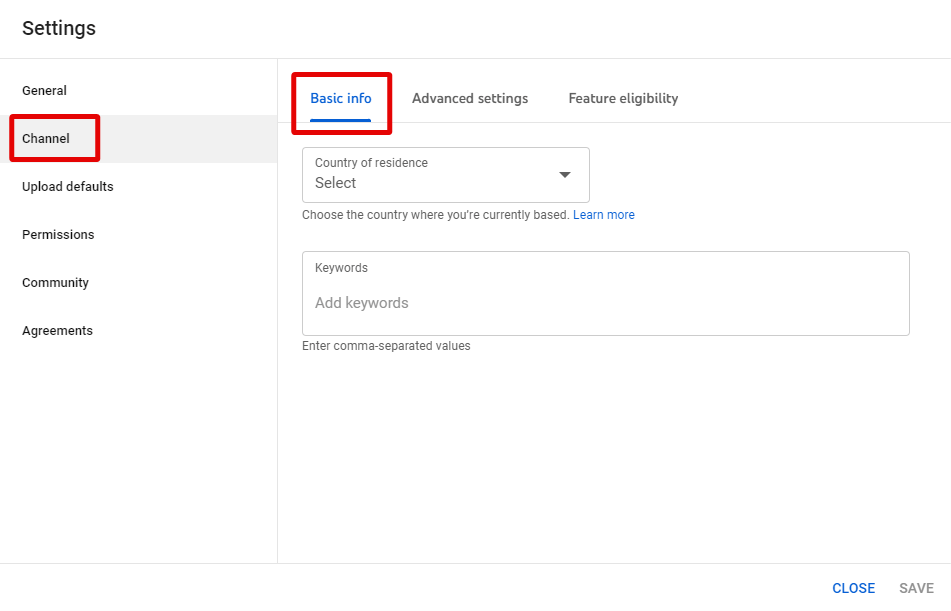
- Once inside, you’ll notice three sub-tabs: Basic Info, Advanced Settings, and Feature Eligibility. For keywords, you’ll focus on the “Basic Info” section.
Step 4 – Add Your Keywords
In the “Basic Info” section:
- Locate the box labeled “Keywords.” Here, you can type in the keywords that best represent your channel’s content.
- As you type each keyword or phrase, hit “Enter” or “Return” on your keyboard. This will transform the term into a “tag-like” format, clearly distinguishing each keyword.
-
Be mindful of the character limit (500 characters). Try to prioritize the most relevant and impactful keywords that genuinely reflect your content.
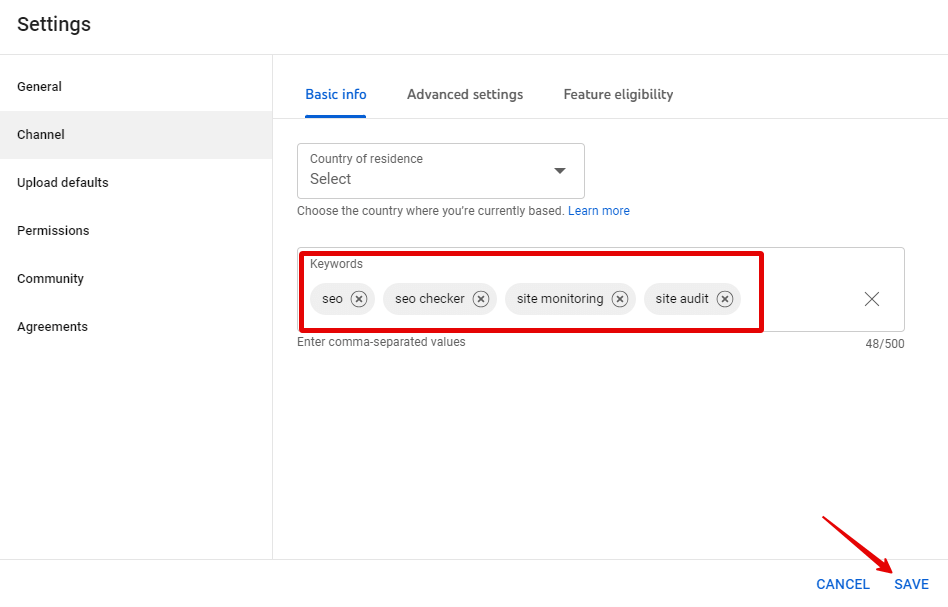
- Once you’ve added all desired keywords, click on the “Save” button to ensure that all changes are stored.
Remember, regularly updating your keywords based on the evolution of your content and audience preferences can be beneficial. Channel keywords are a powerful tool, and when utilized effectively, they can significantly improve your channel’s discoverability.
Optimize Your YouTube Video Titles
Your YouTube video title is one of the first things a viewer notices when they come across your content. It plays a critical role not only in catching a viewer’s attention but also in improving the video’s searchability within YouTube and on external search engines. Let’s delve deeper into how to optimize YouTube video titles.
Importance of Title Keywords
- Search Engine Optimization (SEO): YouTube is the second-largest search engine in the world. Including relevant keywords in your title helps YouTube’s algorithm understand your video content and rank it higher for relevant search queries.
- Viewer Attraction: A keyword-rich title can attract more clicks. When viewers search for specific topics, they’re more likely to click on videos with titles that directly match or closely relate to their query.
- Clarity and Context: Including appropriate keywords provides potential viewers with immediate clarity about the video’s content. This clarity can increase the likelihood of engagement from viewers genuinely interested in the topic.
- External Search Engines: Optimized titles also play a role in getting your video ranked on external search engines like Google. A well-optimized video title can appear in Google’s video search results, driving additional traffic to your video.
Best Practices for Title Optimization
| Place Important Keywords Early | While it’s essential to have a title that reads naturally, try to place the most critical keywords towards the beginning of the title. This ensures that they’re immediately visible in search results and suggestions. |
| Keep It Concise | YouTube’s limit for video titles is 100 characters, but titles can be truncated in search results after 60-70 characters. It’s best to convey the main message within this range to ensure it’s seen by viewers. |
| Avoid Clickbait | While catchy titles can increase clicks, misleading titles can lead to quick video exits, which can hurt your video’s YouTube ranking. Always ensure that the title accurately represents the video content. |
| Use Numbers | If relevant, using numbers (e.g., “5 Ways to Improve SEO” or “Top 10 Travel Destinations”) can make your video seem more structured and can attract more clicks. |
| Test and Iterate | YouTube analytics can provide insights into which titles perform best. If a video isn’t getting the expected traction, consider tweaking the title based on performance data. |
| Consider Emotional Appeal | Titles that evoke curiosity, excitement, or other emotions can increase click-through rates. Think about how your content can solve a problem, inspire, or entertain, and reflect that in the title. |
A well-optimized YouTube video title can significantly improve the visibility and success of your content. By understanding the importance of title keywords and implementing best practices, you can ensure your videos attract the right audience and achieve higher engagement.
Add Keywords to Your Channel Description
The channel description, located in the “About” section of your YouTube channel, provides a summary of what viewers can expect from your content. It’s a prime location for integrating keywords, as it can improve discoverability while offering clarity about your channel’s theme and content. Let’s dive deeper into the significance of keywords in the channel description and how to craft a description that is both engaging and keyword-rich.
Relevance of Description Keywords
- Enhanced Discoverability: YouTube’s search algorithm scans channel descriptions to understand the content focus. By incorporating relevant keywords, you increase the chances of your channel appearing in search results for related queries.
- Viewer Clarification: A description that integrates pertinent keywords helps potential subscribers quickly grasp the central themes and topics of your channel, ensuring they know what kind of content to expect.
- External Search Benefits: Beyond YouTube, search engines like Google also index YouTube channel descriptions. Incorporating relevant keywords can help your channel show up in external search results, drawing in more viewers.
- Synergy with Other SEO Elements: While video titles and tags are essential, a keyword-rich channel description creates a cohesive SEO strategy, reinforcing the main topics and themes of your channel.
Crafting a Keyword-Rich Description
| Begin with Core Keywords | Start your description by addressing the primary themes or subjects of your channel. For instance, if you run a fitness channel, terms like “workout routines,” “fitness tips,” or “healthy recipes” might be core keywords. |
| Natural Integration | While it’s important to incorporate keywords, ensure that the description reads naturally. Avoid keyword stuffing, which can come off as spammy and might deter potential subscribers. |
| Detail Specific Content Types | If your channel covers various subtopics or has different video series, highlight these with appropriate keywords. For example: “Every week, dive into ‘Yoga for Beginners’ tutorials or explore our ‘Quick Cardio Workouts’ series.” |
| Call-to-Action (CTA) | While your primary goal is keyword integration, don’t forget to engage viewers with a CTA, like encouraging them to subscribe or check out a specific playlist. |
| Use Long-Tail Keywords | These are longer phrases that users might search for. Instead of just “travel,” consider using terms like “solo backpacking adventures” or “luxury European getaways.” |
| Update Periodically | As your channel grows and evolves, revisit and update your description. This ensures that it continues to align with your content and taps into current search trends. |
| Optimal Length | While YouTube allows a generous 5,000 characters for the channel description, it’s essential to capture the viewer’s attention in the first few lines. Ensure the most crucial information and keywords appear early on. |
A well-crafted channel description offers a dual benefit: it informs potential subscribers about your channel’s content while improving discoverability through keyword optimization. By understanding the significance of description keywords and strategically integrating them, you can position your channel for greater visibility and growth.
Assign Channel Tags
Channel tags, often overlooked, play a pivotal role in categorizing your content and improving its discoverability on YouTube. These tags provide concise metadata that YouTube’s algorithm uses to understand the primary themes and topics of your channel. By leveraging tags efficiently, you can ensure that YouTube suggests your content to the right audience.
Benefits of Using Tags
- Improved Discoverability: Tags help the YouTube algorithm comprehend the content and essence of your channel. When your tags align with search queries, there’s a higher chance your channel will appear in search results.
- Content Categorization: Tags offer a way to categorize your content. If your channel covers multiple themes or topics, tags help YouTube understand and categorize each one, making it easier for viewers to find content that matches their interests.
- Enhanced Suggested Video Placement: When your tags match those of popular videos in your niche, there’s an increased likelihood of your videos appearing in the “suggested videos” sidebar, driving more organic traffic to your content.
- Audience Targeting: Tags can guide YouTube in recommending your content to the right audience. For instance, if your content is specifically tailored for beginners, tags like “for beginners” or “introductory” can help attract the appropriate viewers.
Strategies for Effective Tagging
- Start Broad, Then Narrow Down: Begin with generic tags that describe your channel’s primary themes and then incorporate more specific tags that pertain to individual topics or series.
- Use Multi-Word Tags: While single-word tags can be effective, multi-word or long-tail tags (e.g., “vegan dessert recipes” rather than just “vegan”) are often more descriptive and can align better with user search queries.
- Analyze Competitors: Check out channels in your niche to see which tags they are using. While you shouldn’t copy them outright, they can offer inspiration and help you identify important keywords you might have missed.
- Avoid Overstuffing: While it’s tempting to use as many tags as possible, it’s more beneficial to choose a selection of highly relevant tags. This ensures clarity and reduces the risk of being flagged for spam.
- Use Tools: There are several tools and plugins available, like TubeBuddy or vidIQ, that offer tag suggestions and analytics to help you optimize your tagging strategy.
- Stay Updated: As with other aspects of SEO, the effectiveness of tags can change over time. Periodically review and update your tags based on performance analytics and evolving content.
- Incorporate Synonyms and Variations: Different people might search for the same thing using different terms. If your channel covers “hiking,” consider tags like “trekking” or “backpacking” as well.
Channel tags are more than just metadata. They’re powerful tools that, when used strategically, can significantly boost your channel’s visibility and attract a more targeted audience. By understanding their benefits and applying effective tagging strategies, you can enhance your YouTube SEO and grow your subscriber base.
Common Mistakes Made When Using YouTube Channel Keywords
Not Being Specific Enough
One of the most common mistakes made when optimizing YouTube channels or videos is the use of overly broad or generic keywords. While these might seem appealing due to their wide reach, they can be detrimental in terms of targeting the right audience.
-
Why It’s a Problem:
- Lost in the Crowd: Generic keywords often have high competition. For a smaller channel, it’s challenging to rank and get noticed using such broad terms.
- Lack of Targeting: Using vague keywords can attract a broad audience, but this might not translate to engaged viewers or subscribers. It’s always better to draw in a smaller, more engaged audience than a large, disinterested one.
- Reduced Relevance: YouTube’s algorithm prioritizes relevance. If your content doesn’t align closely with broad keywords, it may not be recommended as often, leading to reduced visibility.
- Solution: Focus on long-tail keywords or more specific terms that precisely define your content. This narrows down your competition and improves the likelihood of attracting genuinely interested viewers.
Including Too Many Keywords
In an effort to cover all possible search queries, some creators overload their content with keywords. This approach, known as keyword stuffing, can have negative repercussions.
-
Why It’s a Problem:
- Diluted Message: Overloading with keywords can dilute the core message or theme of your content, confusing both viewers and algorithms.
- Perceived as Spam: Both YouTube and viewers can perceive content with excessive keywords as spammy or inauthentic, leading to reduced trust and engagement.
- Algorithmic Penalties: YouTube’s algorithm can potentially penalize content it deems as trying to “game” the system, leading to reduced visibility.
- Solution: Choose a limited set of highly relevant keywords that accurately represent your content. Prioritize quality and relevance over quantity.
Grammar Issues
Grammar might not seem like a big deal when it comes to keywords, but it can make a significant difference in discoverability and professionalism.
-
Why It’s a Problem:
- Reduced Search Match: Minor grammatical errors can lead to your content not matching search queries, even if it’s relevant.
- Perceived Lack of Professionalism: Grammar mistakes can give the impression of carelessness or a lack of professionalism, potentially deterring viewers.
- Miscommunication: In some cases, grammatical errors can change the meaning of a keyword or phrase, leading to misguided viewers or incorrect categorization.
- Solution: Always double-check your keywords for grammar and spelling. Consider using tools like Grammarly or even simple spell checkers to catch any mistakes.
Optimizing your YouTube content for discoverability requires careful consideration and strategic thinking. By avoiding common pitfalls like generic keywords, keyword stuffing, and grammatical errors, you can ensure your content reaches the right audience and resonates effectively.
Discover the Top Keywords List for YouTube Channels
The YouTube Channel Keywords List tool by SiteChecker offers a unique solution for content creators looking to enhance their YouTube channel’s visibility and audience reach. This tool specializes in generating a tailored list of effective keywords, vital for optimizing channel descriptions and video content. By incorporating these keywords, YouTubers can significantly improve their chances of ranking higher in search results and recommendations, ultimately attracting more viewers and subscribers.

Beyond mere keyword generation, this tool provides insights into keyword trends and popularity, helping creators to align their content with current viewer interests. It also suggests variations and related terms, offering a broader scope for content optimization. This comprehensive approach ensures that the channel not only draws more traffic but also engages viewers more effectively, making the YouTube Channel Keywords List tool an indispensable asset for any serious YouTube content creator.
Enhance YouTube Visibility with Strategic Keywords!
Use our Keywords List tool to discover keywords that attract viewers.
Conclusion
Navigating the intricacies of YouTube optimization can be a daunting task, but understanding its nuances is vital for channel growth. From being precise with keyword choices to maintaining grammar integrity, every detail contributes to how effectively your content reaches its intended audience. Overstuffing with keywords or being too generic can dilute the impact of your content, while grammatical errors can tarnish professionalism. As creators and marketers, it’s essential to strike a balance, ensuring content is both discoverable and resonates with authenticity. By avoiding common pitfalls and focusing on genuine audience engagement, you can harness the full potential of YouTube’s vast platform.
